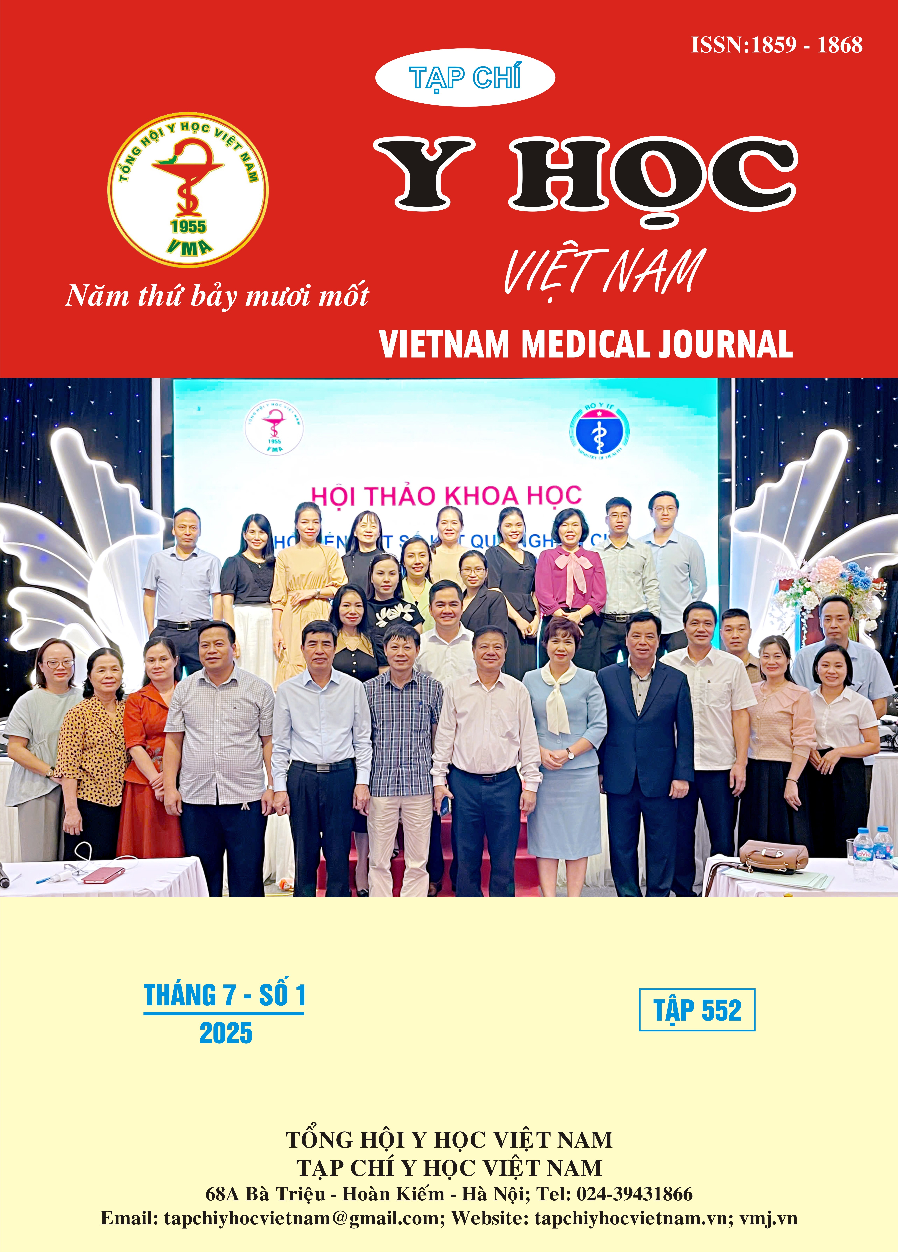THỰC TRẠNG SỬ DỤNG KHÁNG SINH Ở BỆNH NHÂN ĐIỀU TRỊ NỘI TRÚ TẠI TRUNG TÂM Y TẾ THÀNH PHỐ BẾN CÁT NĂM 2024
Nội dung chính của bài viết
Tóm tắt
Mục tiêu nghiên cứu: Khảo sát thực trạng sử dụng kháng sinh ở bệnh nhân điều trị nội trú tại Trung tâm Y tế thành phố Bến Cát năm 2024. Phương pháp nghiên cứu: Nghiên cứu cắt ngang mô tả, thực hiện trên 622 hồ sơ bệnh án điều trị nội trú được chọn ngẫu nhiên trong năm 2024. Trong số này, 316 hồ sơ (50,8%) có sử dụng ít nhất một kháng sinh và được đưa vào phân tích. Kết quả: Tỷ lệ nữ chiếm 53,8%, nam 46,2% (P = 0,196). Mẫu được chia thành hai nhóm tuổi: trẻ em (<18 tuổi, n = 86) và người lớn (≥18 tuổi, n = 230), với sự khác biệt có ý nghĩa thống kê về phân bố bệnh lý nhiễm khuẩn giữa hai nhóm (P = 0,001). Nhiễm khuẩn đường hô hấp là bệnh lý phổ biến nhất (60,4%), tiếp theo là nhiễm khuẩn tiêu hóa (13,6%). Việc lựa chọn kháng sinh ban đầu, đơn trị được sử dụng chủ yếu (77,8%), với nhóm beta-lactam chiếm ưu thế (83,7%), đặc biệt trong điều trị nhiễm khuẩn hô hấp. Việc lựa chọn kháng sinh đơn trị ban đầu có sự khác biệt theo loại nhiễm khuẩn (P = 0,001). Không ghi nhận mối liên quan có ý nghĩa thống kê giữa lựa chọn kháng sinh và bệnh nền đi kèm (P = 0,115). Có 3 trường hợp suy thận cấp không được điều chỉnh liều phù hợp. Có 99 trường hợp sử dụng phối hợp kháng sinh, chủ yếu là beta-lactam phối hợp với macrolid hoặc quinolon, tập trung ở bệnh lý nhiễm khuẩn hô hấp và tiêu hóa. Một số ít trường hợp sử dụng ba loại kháng sinh đồng thời. Thời gian dùng kháng sinh trung bình là 5,7 ± 3 ngày; nhóm nhiễm khuẩn hô hấp có thời gian điều trị dài nhất (6,4 ± 3,2 ngày, P = 0,001). Hiệu quả điều trị cho thấy 82,3% bệnh nhân khỏi hoặc cải thiện triệu chứng, 6,3% chuyển viện, không ghi nhận ca tử vong. Nhóm nhiễm khuẩn tiêu hóa có tỷ lệ chuyển viện cao nhất (11,6%). Ngoài ra, phát hiện 6 trường hợp sử dụng ceftriaxone truyền chung dung dịch Ringer Lactate – có nguy cơ kết tủa calci, đặc biệt ở trẻ em và người cao tuổi. Kết luận: Việc lựa chọn kháng sinh ban đầu nhìn chung phù hợp với lâm sàng và hướng dẫn điều trị. Tuy nhiên, vẫn còn tồn tại một số vấn đề cần cải thiện như chưa điều chỉnh liều cho bệnh nhân suy thận và phối hợp thuốc có nguy cơ tương tác bất lợi.
Chi tiết bài viết
Tài liệu tham khảo
2. Đặng Thị Soa và cộng sự (2022), “Tổng quan về tình hình kháng kháng sinh của một số vi khuẩn thường gây bệnh trên lâm sàng tại việt nam từ 2017- 2022”, Tạp chí Y học Việt Nam, Tập 519-số 1, tr.309-313.
3. Thu Truong Anh, et al. (2012), “Antibiotic use in Vietnamese hospitals: a multicenter point-prevalence study”, American journal of infection control, 40(9), pp. 840-844.
4. Australian Commission on Safety and Quality in Health Care (2015). Antimicrobial prescribing practice in Australian hospitals: results of the 2014 National Antimicrobial Prescribing Survey, ACSQHC, Sydney.
5. Nguyễn Thanh Lâm và cộng sự (2023), “Khảo sát về tình hình sử dụng kháng sinh và sự đề kháng kháng sinh tại khoa nội tổng hợp bệnh viện trường đại học y dược cần thơ năm 2021-2022”, Tạp chí Y Dược học Cần Thơ, Số 60, tr.58-64.
6. Võ Thị Mỹ Hằng, Dương Xuân Chữ (2022), “Nghiên cứu tình hình sử dụng kháng sinh tại khoa nội-nhi-nhiễm, Trung tâm Y tế huyện Vĩnh Lợi, tỉnh Bạc Liêu”, Tạp chí Y học Việt Nam, Tập 519-số 2, tr.288-293.


